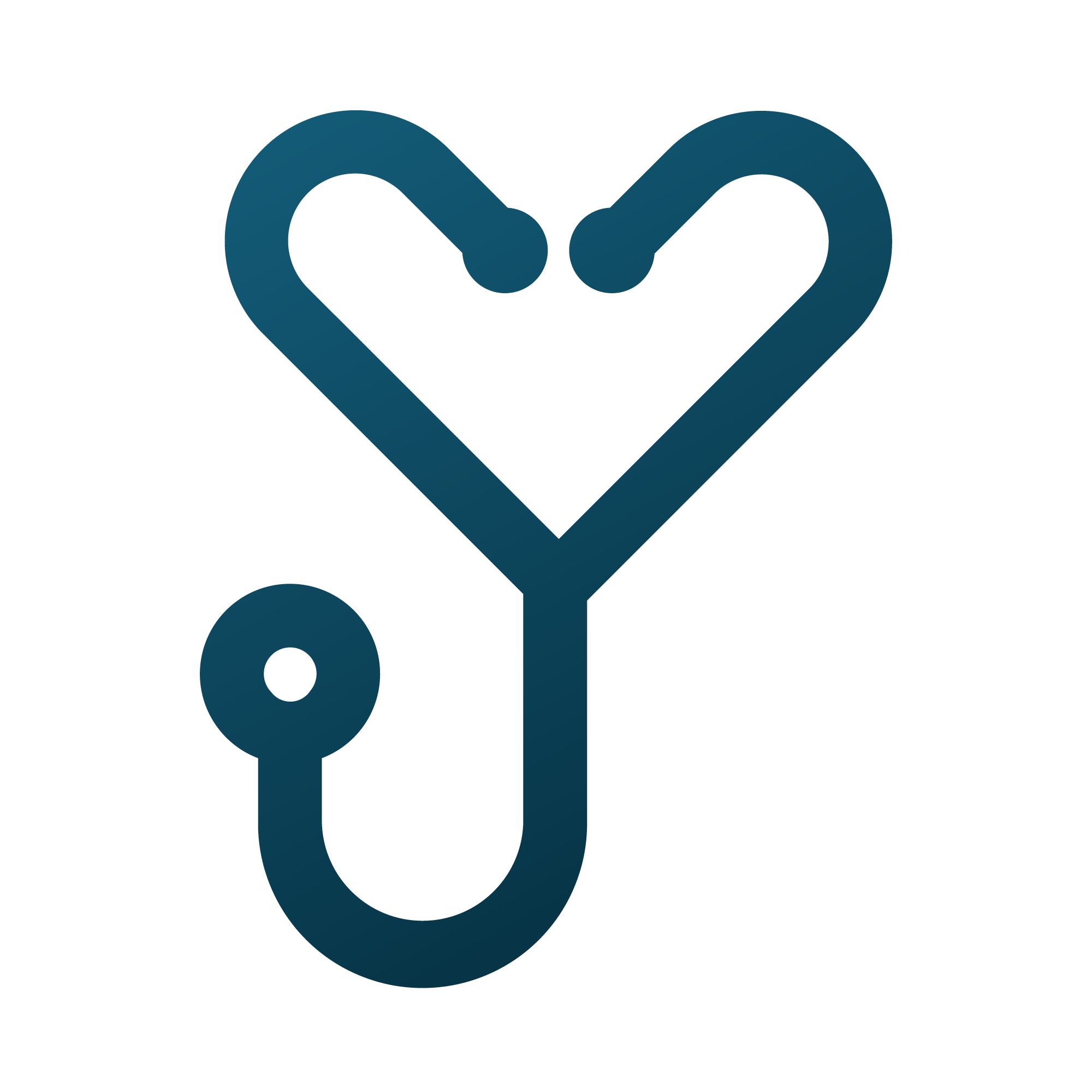Mastering Mental Health Intake Forms in 2023

Say goodbye to clunky clipboards and PDFs. Discover the best practices for collecting mental health intake forms in 2023. Empower your care teams & improve your patient satisfaction rates today.
Mental health intake forms furnish essential information for providers and care teams. However, collecting this important information can slow down a practice’s flow and impede patient care if the right solution isn’t in place. Learn more about digital intake forms, their various benefits, and the steps you can take to streamline this technology in your practice today.
What are Patient Intake Forms?
Care teams use mental health intake forms to obtain a patient’s medical history, current symptoms, and other pertinent data in order to deliver patient care. These forms also include contact details, addresses, and emergency contacts. In short, intake forms are the legal way to obtain patient data.
In the past, this info was gathered simply with pen and paper. More and more often, digital intake forms are replacing the traditional method. With mental health digital intake forms, patients can complete them anywhere and anytime, and on any device. Once the digital forms are complete, they are sent back electronically to the care teams.
Important Mental Health Intake Forms for Behavioral Health Organizations
While the specifics of digital forms vary from practice to practice, there is pertinent data every practice should include. With the right telehealth solution, mental health providers can customize these forms to their practice needs.
- Basic mental health intake form: This form includes basic patient info such as name, DOB, address, and contact details. Include space for medical history, current state of health, and any symptoms. Reasons for seeking mental healthcare, as well as therapy goals, are useful questions as well. Insurance details are often collected at this step, too.
- Informed consent form: This form explains important details about the therapy process. This includes potential risks and benefits of treatment, confidentiality policies, and the rights and responsibilities of both patients and providers. It ensures that patients fully understand what to expect during their therapy or counseling sessions before they begin. To agree, a patient will fill out their name, date of birth, signature, and date.
- Records release authorization form: A patient can use this form to allow the sharing of mental health data with specific people that they choose. It allows for secure, controlled sharing of mental health records as needed. Patients can revoke this at any time.
Why is the Digital Intake Process So Important?
The intake process sets a tone for your practice when onboarding new mental health patients. If a process is difficult or stressful, patients can get discouraged and turn away before even stepping foot in an office or joining a virtual space. The intake process must be fast, efficient, and easy to complete. Otherwise, practices are at risk of losing patients.
The Benefits of Going Digital
Digital intake forms also have an impact on patient behavior and offer a multitude of benefits.
Intake Patients Faster
Patients shouldn’t have to show up 30 minutes early or more to their visit to fill out a clipboard of paperwork. With digital intake forms, patients can complete the forms at home and reduce wait times.
By speeding up efficiency with digital forms, providers can see more patients every day. This also means that staff who used to handle paperwork can now focus on more important patient care tasks.
With Mend, digital forms are easy to access for patients and can speed up the intake process dramatically. Sixty-eight percent of forms are completed within an hour of being received.
Reduced Paperwork
Traditional paper intake at the time of a visit isn’t only a nuisance for patients. Pen and paper processes also slow down care teams and create a bottleneck at the front desk.
There is also an environmental cost to consider. Digital intake forms cut costs related to paperwork, including paper, clipboards, pens, printing supplies, and storage.
Enhanced Data Security
If a paper document gets lost or falls into the wrong hands, your practice could face HIPAA violations. Digital intake forms help tighten security by ensuring that only authorized care teams can access patient data.
Mend is 100% secure, confidential, and HIPAA-compliant telehealth software. In order to fill out their mental health intake forms, patients are sent a secure link with steps to verify.
Keep Patient Data Accurate
Digital intake forms allow care teams to keep patient data accurate with even less work. With pen and paper methods, duplicate data entry tasks increase the risks of data errors. Inaccurate patient records can cause inefficiencies in care workflows and even compromise care and treatment decisions.
Digital forms reduce the manual touchpoints for patient data, reducing the chances of human error. More than 98% of patients on Mend have valid contact details.
Improved Patient Experience and Engagement
In an increasingly digital landscape, patients want easy solutions. Ninety-three percent of patients expect healthcare practices to use digital tools when interacting with them, specifically during intake.
When patients complete their forms online, they also become more involved in their care. In turn, they are more likely to keep their appointment. Practices with a telehealth solution and digital intake forms in place have an average patient engagement rate of 80%.
Reduce the Rate of No-Shows
The average no-show rate is 23% globally, but that number is often higher in the mental health space. Patients with behavioral illnesses often face more hurdles, such as anxiety, depression, or decreased motivation. These elements make it difficult for patients to follow through with help.
If your mental health practice is looking for ways to decrease no-shows, digital intake forms may be the answer. With an easy, straightforward intake process, patients are more likely to engage in their care and attend their visits.
[Related: The Ultimate Guide to Eliminating No-Shows in Mental Health Organizations]
Streamline Digital Intake Forms with Your EMR
The benefits of digital forms are clear — but you may now be wondering how to integrate this tech into your current flow. The right digital solution will include custom-built forms, secure links, and system integration.
Custom-built forms
Different practices need different forms. Mental health intake forms provide a way for patients to discuss their concerns and goals for treatment. This info then enables care teams to gain a deeper understanding of the patient’s history and provide tailored support.
With Mend, providers can customize and tailor digital intake forms to specific needs and specialties. Our experts can digitize any current forms, update them as needed, and translate paperwork into any language.
Secure links
Once forms are ready, patients will, of course, need a way to access them. With Mend, patients can access their digital intake forms via secure links through text/email or through the practice’s website.
Whether patients use a smartphone, tablet, or laptop, they can fill out the forms in just a few steps. Patients can even send their medical histories by attaching files or images.
Reputable software providers like Mend use encryption and other security measures to protect sensitive patient data. This ensures compliance with healthcare mandates like HIPAA and is paramount to consider when choosing your digital solution.
Integrate with Your EHR
Integration with your practice’s EHR must occur at multiple touchpoints. First, a digital solution needs to identify a new patient that needs onboarding forms. Once the system pinpoints the patient, it should automatically send the required forms via a secure link.
After the patient fills in their details, the fields can auto-populate in the patient’s EHR. This reduces the need for manual entry and the potential for error. Digital solutions can also flag care teams if details are missing or incomplete.
In addition to forms, the right platform can also send appointment reminders before a visit or therapy session. After-visit dues can also be auto-sent.
How Digital Forms Improve the Telehealth Experience
Digital intake forms work wonders for in-person visits by reducing wait times and office — but the benefits of combined digital forms and telehealth capabilities are exceptional. That’s because gathering essential info before virtual visits allows care teams to focus solely on doing what they do best: providing care. Here’s how:
- Pre-visit engagement: Digital forms are the new appointment confirmation. As patients engage with the digital intake process, they become more invested in their upcoming appointment. This active involvement can increase their commitment to attending their therapy session. This is important with a specialty like behavioral health, which often has a high no-show rate.
- Clear Instructions and Information: Digital intake provides clear instructions and pertinent details for upcoming visits. With Mend, the forms and instructions are in the patient’s chosen language. This reduces confusion that may lead to missed mental health sessions.
- Technological Readiness: Digital intake processes ensure patients have the right tools for a successful telehealth session. This includes elements such as a stable internet connection and compatible devices. This prep decreases potential technical issues, so providers and patients can have full-length sessions without any technical disruptions.
Top KPIs to Measure Your Digital Patient Intake Forms
When setting up your digital intake process, you can measure the success of your forms by tracking telehealth key performance indicators (KPIs). Digital patient intake forms offer real-time data collection and analysis. Here are three important KPIs to consider:
- Completion Rate: This KPI measures the number of completed forms against the number of forms sent. With Mend, most practices see between 82% and 100% of digital forms get filled in.
- Speed to Completion: This metric measures how quickly patients fill out a form once it has been sent. Out of one million Mend digital patient intake forms filled in, 68% came back in an hour. Seventy-five percent came back in one day.
- Automation: Instead of staff mailing paperwork, a digital solution can identify and automatically send mental health intake forms to new therapy patients. With this in place, mental health practices can see a massive reduction in overhead and errors. This info can be tracked with a digital solution like Mend.
With this data readily on hand, teams can spot patterns and potential issues that might go missed with paper-based forms.
The future of digital intake form solutions goes even further. Soon, processes will be able to automatically score patient responses or use algorithms to assess mental health risk levels. This will help care teams quickly spot patients who may require urgent attention.
Get Started with Digital Intake Forms Today
Put an end to dreaded paperwork and implement digital solutions in your practice today. Digital intake forms offer a multitude of benefits, including faster intake, improved efficiency, more time with patients, and more. Mental health digital intake forms also go hand-in-hand with telehealth visits, allowing you to complete more sessions and help more patients.
At Mend, we provide proper training and ongoing support to make the transition to digital forms even easier. With an average response time of 23 seconds, staff and patients can get instant support, keeping therapy sessions on track. Schedule a demo today to see why Mend is the #1 customer-rated for ease of use and customer service.
FAQs
What is an intake assessment for mental health?
Mental health digital intake forms are forms used by doctors to collect patient info before the visit. This assessment may include details such as current symptoms and meds, medical history, and patient address and contact details. With a digital solution in place, the patient fills in the form and sends it online. This avoids the need for a paper version.
How do you conduct a mental health assessment and intake?
Care teams can conduct a mental health assessment through a digital intake form. Patients can receive a secure link and access their forms via their mobile device, tablet, or online. Once the patient fills out the forms, they can send them back to the secure, HIPAA-compliant Mend portal. The details then get stored in the patient’s EMR.
How do I create a digital intake form?
With an integrated telehealth solution like Mend, patients are automatically sent a digital intake form via text or email. Providers can customize these forms to collect patient data as well as share any details like directions or instructions. Once the patient completes their form, it will automatically be ready for viewing in the EMR.
How do you determine a reliable mental health assessment tool?
Practices can measure the success of their mental health assessment tools and intake forms by tracking telehealth KPIs. For example, out of one million Mend digital patient intake forms filled in, 68% came back in an hour. Seventy-five percent came back in one day. Most practices see between 82% and 100% of digital forms get filled in.
Discover how Mend’s digital intake solutions can improve patient satisfaction and attendance.
Keyword:
Find a Topic:
Recent Posts
- Compassionate Foundations: Self-Care for Mental Health Providers
- Behavioral Health News: Mend Partners with Leading Community Mental Health Organizations to Reduce No-Shows and Increase Access to Care
- Understanding SAMHSA’s Key Changes to 42 CFR Part 8: A Guide for Healthcare Professionals
- Becoming a CCBHC: Staffing Requirements
- Empowering Change: SAMHSA’s Impact on Behavioral Health Through Grant Funding, Innovation, and Collaboration



